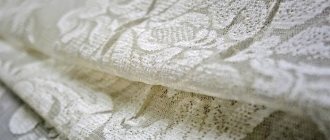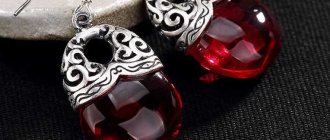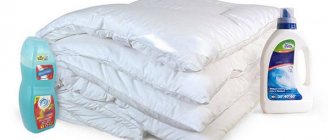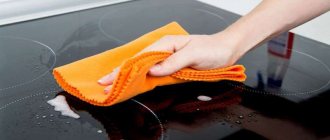Can Roman blinds be washed?
The answer to this question is clear - they can be washed, and in some cases it is even necessary. However, the procedure must be performed carefully, wisely and with extreme caution. First you need to decide whether the procedure will be done manually or in a washing machine. Much also depends on the material used to make Roman blinds. More details about these and other aspects later in the article.
Types of fastening
Where and how are Roman blinds attached correctly? There are several ways to attach a profile with a curtain.
Wall mounting step by step instructions
The device is installed above the window opening. The standard length of such a cornice is 110 – 250 cm. Fasteners must be made along each edge and in the center.
- Using a building level, the fastening points are marked. The distance between the opening and the edge of the cornice on both sides should be the same.
- Drilling holes with a hammer drill or a drill with a breaker mechanism. The choice of tool depends on the wall material.
- A dowel is inserted into the hole, a fastener is attached, which is tightened with screws. Tightening is not done all the way. Final tightening with screws after installing all elements.
- Hanging and fixing a cornice with a curtain.
- Checking and adjusting the structure as a whole.
Wall mounting without cornice
How can you attach Roman blinds to the wall if the kit does not include a curtain rod or if they were sewn by yourself? There are 3 options for how to hang such a curtain:
- Furniture staples. The curtain is fixed with a furniture stapler. There is a possibility of fabric damage.
- Adhesive tape. Velcro tape is sewn from the inside out of the top of the curtains, a line is drawn on the wall and Velcro is glued to the mark. It is advisable to decorate the gluing area with fabric.
- Double sided tape. Take a hairdryer and heat up the tape. On one side it is glued to the profile of the canvas assembly, on the other - to the wall. To increase the strength of the connection, additional fixation of the fabric with plastic clips is used.
Using a cornice
There are a number of ways to hang a Roman blind on a curtain rod profile using special holders. Their choice is influenced by the features of the window design.
Holder types:
- a mini cornice allows you to hang a light window curtain;
- classic holders can withstand denser and heavier textiles;
- Bevel holders consist of two elements and are used in designs for profiles of non-standard shapes. One holder is fixed at the top of the Roman curtain, the other at the bottom.
Installation without drilling
There are several ways you can attach a Roman shade without drilling holes in the walls:
- A furniture stapler is used to fix the adhesive tape onto which the curtain is glued. The canvas can be easily removed and attached back.
- for lightweight fabric, adhesive cushioning tape is used, which is glued to the material and the window;
- Curtains sewn at home have loops at the top. They are nailed to the installed cornice using a stapler.
How to attach with self-tapping screws
- The mounting points are marked in the wall, ceiling slab or window profile. Holes are drilled at specified points.
- The brackets are secured with self-tapping screws. If the curtain is operated by a chain or rope, the set is equipped with L-shaped brackets.
- The assembled Roman blind is fastened to the curtain rod with clips or Velcro in accordance with the instructions.
How to hang on mounting brackets
The process of hanging curtains on holders is quite simple:
- Mark areas for holders. The distance between the holders should exceed the width of the canvas by 0.03 cm.
- Installation of holders.
- Insert the strip with the fabric attached into the brackets.
Option for fixing outside the window opening
A properly installed structure outside the window will allow the sash to open and close without hindrance. The curtain must be 120 mm - 150 mm wider than the sash.
Ceiling installation involves installing an axis between the holders. A Roman curtain is hung on the axle. This design visually expands the space and allows you to hide the imperfections of the slopes.
Option for fixing inside a window opening
First, the parameters of the opening are measured: length, width, height. The ideal option is when the parameters of the canvas are less than the measured parameters. The holders are positioned so that the window opens and closes freely. When open, the curtains do not come into contact with the handles and latches. The distance between the holders must match the width of the material.
Features of fastening on plastic windows
For installation on a window profile, it is important to consider some nuances:
- The assembled Roman blind from above is not pressed tightly against the cornice, otherwise the window will be difficult to open. Therefore, the height of the immovable section of material is the same as the distance from the mounting location of the bracket to the top point of the window frame;
- Self-adhesive holders are used on fixed and casement windows. The window profile is first degreased with alcohol;
- Before installing the holders, find out where the electrical wiring is located;
- If you live with small children, ensure that they are protected from injury. To do this, the latches are securely closed from prying children's eyes.
Fixation to the ceiling
The Roman blind is mounted on the ceiling, as well as on the wall. A hole is drilled in the ceiling slab, a dowel is driven in, a mounting bracket is attached and tightened with a self-tapping screw. The structure is installed on the ceiling if the set includes curtains.
How to install a curtain on an opening window sash
Installation is carried out using additional holders without drilling in the following ways:
- The fastening anchors are connected to the cornice with screws and nuts. Using plastic hooks, the resulting structure is placed over the frame.
- Installation is similar to the previous method. The holders are secured with screws, placed on the frame and a cap is put on top.
- Flat mini-curtains with guide strings are installed on movable sashes. The strings are secured with special holders included in the kit.
- Self-adhesive holder. The anchor secured with screws and nuts is glued to the degreased frame. Afterwards the canvas is hung.
How to install on the bar
Typically, a set of Roman blinds includes a strip that is attached to the window profile, wall or slope.
- Installation of a special anchor using self-tapping screws.
- From the inside, the curtain is hung on rings that are put on the bar.
- The bar is inserted into the holders.
How to hang with Velcro
Installation begins with marking the fastening points followed by installation. Then everything is simple:
- unraveling ribbons and chains that are part of the lifting mechanism;
- gluing the top strip of fabric to the cornice with Velcro tape;
- the hoist ropes are threaded through the rings from the inside of the curtain;
- on the outer ring the lace is tied tightly;
- installation of the lift and installation of the resulting structure in the holders.
General rules
Roman blinds do not require frequent washing or cleaning, since the fabrics are treated with a composition to repel dust and protect against fading. Before washing them, you should study the product care instructions and also adhere to a number of recommendations:
- curtains from the kitchen should be washed separately, a large amount of fat accumulates on them;
- if there is a significant layer of dust, stains or dirt on the curtains, it is recommended to first soak them in a solution with detergent, and only then wash them;
- Use special stain removers to remove stains according to the instructions. They, along with household cleaning products, must be tested first: apply to an inconspicuous area (fold, wrong side) so as not to irreversibly damage the curtain;
- chlorine bleaches and aggressive stain removers are prohibited;
- fabric Roman blinds can be washed either by hand or by machine using conventional washing powders, at a temperature not exceeding 40 degrees and selecting a mode for delicate fabrics or “hand wash”;
- Dishwashing liquid is suitable for soaking. The selection of washing powder depends on the type of fabric used to make the linen;
- When washing by machine, there should be about 30% free space in the drum. This will ensure the quality of washing, rinsing and spinning.
Materials
Depending on what the curtains are made of, choose the cleaning method. For each material, the appropriate temperature regime is set and the detergent used for washing is selected.
Non-woven
If the curtains are made of bamboo or paper, they cannot be washed.
Wiping with a damp, well-wrung cloth will do.
Natural materials
Natural materials are used to produce curtains: linen, cotton, silk. For each of them, a more gentle washing method is selected. The composition of the item can be found on the label.
Linen
Such curtains can be washed in any convenient way and even boiled.
But this method is only suitable for untreated flax. Dyed fabric is washed at a temperature not exceeding +60 ° C without bleaches. If it is impregnated with any substance or dye, choose a gentle mode, set the temperature to +40 °C.
Cotton
Cotton fabrics are washed at the highest possible temperatures using powder.
For dyed cotton, water is heated to 60 ° C; detergent is chosen for colored fabrics without bleach.
Silk
Such curtains are capricious. They are washed by hand using gels without bleaches. The water temperature should not exceed +40 °C. Do not soak the fabric before washing and twist it after.
Blended fabrics
Synthetics and jacquard are unpretentious materials. They can be cleaned manually or in a machine.
Choose a delicate mode, do not use bleaches. It is not recommended to twist the jacquard.
Which fabrics can't be washed?
You cannot wash fabrics made of bamboo, jute or paper: they deteriorate from moisture and lose their shape.
You even need to wipe them with a semi-dry cloth without removing them from the mounts, or better yet, vacuum them.
Preparatory stage
First of all, determine what material is used in the manufacture of Roman blinds. The choice of cleaning or washing method depends on this.
- Remove the canvas from the cornice. It is attached to it with Velcro.
- Unfasten the laces that are passed through the entire fabric from the rings on the weights located at the end of the product.
- After removing from the window opening, remove the slats, or they are also called guide rods. It is quite easy to pull them out of the fabric, since on one side the edge of the product is left unstitched. If it turns out to be sewn up, carefully rip it open and after washing and inserting the slats, sew it back up.
After removing the components, Roman blinds turn into an ordinary piece of material and are convenient for washing.
Why is it better to remove the slats?
Is it possible to wash Roman shades without removing the guide rods?
Pros: saving time, no need to spend it on pulling out and inserting slats back.
Minuses:
- Automatic washing is not possible. You will need a large manual container so that the canvas fits into it without damaging the guides.
- Even gentle hand washing can damage the fabric.
- The guide bars can be made not only of plastic, which is not affected by water, but also of metal or wood. And they are susceptible to deformation when in contact with moisture. Moreover, metal ones may begin to rust, and yellow spots will appear on the canvas.
What types of Roman linens can be washed?
Roman blinds are made not only from textiles. Conventionally, they can be divided into three types:
- from natural fabrics;
- from mixed fabrics;
- from non-woven materials (mainly from bamboo straws).
All canvases are treated with an antistatic agent during the production process and do not accumulate dust and dirt, but despite this, they require periodic cleaning. Fabric products can withstand washing well if all rules are followed. Canvases made from bamboo straw cannot be washed or washed categorically. For them, only dry cleaning with a vacuum cleaner directly on the cornice is allowed.
Regular ventilation of the canvases in a draft with the windows open will rid them of dust and foreign odors.
Material of manufacture
So, we found out that Roman blinds can be washed. Currently, the following materials are used for the fabrics of such curtains:
- Satin.
- Tulle.
- Linen.
- Combined fabrics.
- Silk.
- Bamboo.
Fabric Roman blinds are washable. It’s worth noting right away that this process can take a lot of time and effort. As for curtains made from bamboo, they cannot be washed. Cleaning of the canvases here should be done exclusively in a dry way.
How to wash Roman blinds? First of all, you need to determine what they are made of. Canvases made from natural fibers quickly deteriorate from contact with moisture. For this reason, they are cleaned using a vacuum cleaner or a dry sponge. Fabric Roman blinds can be cleaned with damp gauze, and if heavily soiled, machine washed using standard powders.
Natural fabric
This group includes materials with special properties: bamboo, thick paper, eucalyptus, burlap (jute). Paper products are destroyed when in contact with water. Products made from other materials are better able to withstand exposure to liquids, but in this case the risk of changing the shape of the fabric increases. For this reason, it is better to use the dry cleaning method.
Possible dust removal options:
- processing in the fresh air (for this you need to remove the canvas);
- removing dust from curtains with a vacuum cleaner;
You can also wipe off dirt from the surface with a dry cloth, but there is a risk of streaks.
Linen
The maximum water temperature during washing is +50°C.
Recommendations for caring for this type of product:
- use manual and automatic washing methods (in the second case, the delicate mode is set);
- squeeze out the material with minimal effort;
- dry linen curtains in a vertical position;
- iron the product when the fabric is still slightly sensitive (this will avoid the appearance of kinks in the material);
- use oxygen-based products if you need to restore the whiteness of the fabric.
How to remove the curtain?
Most housewives try to wash Roman blinds as rarely as possible. Because when preparing for the procedure, you need to spend a lot of time dismantling them. If there is significant contamination on the surface of the curtains that only washing can remove, to remove the curtains you must do the following:
- Unfasten the curtains from the curtain rods. The task may require the assistance of another person. The complexity of the procedure depends on the size of the Roman blind and the height of the window opening.
- Remove the crossbars located between the fabric rows. The planks here can be metal, wood or plastic. Taking them out is quite easy. This is facilitated by the presence of unstitched edges on one side of the product.
Selecting a cleaning option
Caring for Roman blinds involves periodically cleaning the fabric from dust and other contaminants. The choice of technology depends on the material from which the curtain fabric is made. Manufacturers use:
- textiles made of cotton or synthetic thread;
- natural and non-standard materials (jute, bamboo, paper, etc.).
Textile fabrics can be washed by removing them from the curtain rods. Roman blinds made from natural materials can only be dry cleaned, and there is no need to disassemble the structure.
It is important to remember that it is not recommended to wash fabric sheets frequently and violate the gentle washing technology, since this leads to the loss of the dust-repellent layer on the surface of the material - the curtains will become dirty much faster. In addition, frequent washing worsens the appearance of the product and accelerates its wear.
In order to wash textile Roman blinds as little as possible, they should be regularly cleaned with a vacuum cleaner and ventilated by slightly opening the window sash.
Compliance with washing and cleaning technology will not save the fabric from deformation and fading if it was originally made of low-quality material. In such cases, the service life of the product can be extended if you protect the curtains from moisture and high temperature.
Dry cleaning
Not every fabric can withstand wet cleaning without consequences.
This method of care is not suitable for natural, non-woven materials. They are cleaned without the use of liquid. First, clean the fastenings and cornices with a damp sponge.
Treatment frequency
Cleaning is carried out as needed, but at least once a month. If you ventilate the room daily, there will be little dust on the curtains.
Tools
Roman blinds are cleaned with a vacuum cleaner; in this case, they are not removed from the curtain rods. The power is set to minimum. A special narrow nozzle is put on the tube. First, the back part of the product is worked on, then the front part.
Roman blind material
If stains appear or the panel loses its brightness, you can clean it yourself or use dry cleaning services. Many modern salons offer curtain cleaning services, but not every Roman curtain can withstand contact with chemical agents without damage.
The canvas can be made from synthetic fabrics or natural materials: cotton, silk, linen, bamboo. Synthetics are the least demanding: they can be washed, they can easily withstand the use of special detergents, and are suitable for chemical treatment.
The most delicate material is bamboo. Bamboo curtains cannot be washed; moreover, any wet cleaning is prohibited. When in contact with water (or humid air), bamboo swells and loses its attractiveness and strength. The same rule applies to rope curtains.
Cleaning Roman blinds made from non-standard materials
If you want to refresh a bamboo or rope product, follow these recommendations:
- Do not remove the canvas from the cornice - this will protect it from deformation.
- Remove accumulated dust using a brush, dry sponge or vacuum cleaner. There is no need to use a damp cloth - the water will turn the dust into dirt stains that will penetrate into the structure of the fibers.
- If there are grease stains or other stubborn stains on the fabric, apply products suitable for caring for natural fabrics. Do not use stain removers or bleaches - this will leave whitish spots on the material.
Features of washing Roman blinds
Before cleaning curtains made from natural and synthetic fabrics, the fabric must be removed from the curtain rod. Vertical processing will lead to stretching of the material and distortions will appear on the product.
Modern manufacturers provide for simple dismantling of the panel:
- Unfasten the material from the curtain rod. It will take no more than a minute and will not require the use of a special tool.
- Remove all stiffeners. As a rule, the fabric is not stitched on one side, so it is quite easy to get plastic or wooden slats.
After this, it is recommended to pre-soak the curtains in warm soapy water. This will help remove stains and dirt without serious mechanical treatment, that is, as carefully as possible.
How to extend product life
Roman blinds will look presentable for a long time if they are properly cared for.
Recommendations:
Dry cleaning will help get rid of old, stubborn stains. It is not recommended to use stain remover at home.- Velvet fabrics are washed by hand, do not twist. They are allowed to drain in a basin, then dried horizontally on an absorbent substrate. A wet product cannot be hung vertically.
- Silk products can be washed by hand or in a machine. The main thing is not to use spinning or twisting.
- Curtains should be washed completely; individual stains should not be wiped away with soapy water: dirty stains will appear on the product.
- Curtains are dried outside naturally. Do not hang them near heating devices and radiators - the fabric may become deformed.
- Rolled curtains are stored in a tube. This prevents the adhesion of dirt, dust and other contaminants.
Preparing for washing
Once you are sure that the curtains installed in your apartment are washable, carefully remove them from the curtain rod. Between the fabric strips you can easily feel the hard slats that give the structure rigidity. They can be made of plastic, metal or natural wood, but in any case they should not come into contact with moisture.
It is very easy to pull out the guides: the finishing border or sewn tape into which the slats are inserted must be unstitched on one side.
Machine washable
The fabric of Roman blinds can be machine washed if a number of conditions are met:
- the material freed from the slats must be placed in a special bag for washing (however, you can safely use any non-fading pillowcase);
- make sure that the drum is less than half full: if you want to wash curtains from several windows, do it in several stages;
- use products suitable for washing delicate items; before washing, make sure that the powder or gel is pH neutral;
- choose a gentle (“manual”) washing mode with several rinses at minimum speed - all chemicals should be “washed” out of the material;
- do not wring out the curtain - it should drain on its own.
Handwash
This procedure allows you to preserve the color and shape of any product. It is important to follow the recommendations.
Selection of powder, bleach
For delicate and colored materials, choose powders without bleaches.
Chlorine should also not be part of the product. For all types of fabrics, powder with a neutral pH level and natural-based bleach are suitable.
Soak
Before washing, curtains can be soaked in warm water. A neutral liquid detergent is first dissolved in it. The procedure is needed for heavily soiled curtains, such as kitchen curtains.
Soaking in hot water with bleach is unacceptable. Especially dirty areas should not be rubbed. The product is left in water for an hour.
Changing water
After soaking, rub the contaminated areas with a soft sponge. Sudden movements and pressure should not be allowed.
Rinsing
The washed product is rinsed several times. The water is changed every time. The procedure is repeated until the powder is completely washed out.
Drying
The fabric is placed in a basin and allowed to drain. At this stage, you can insert the slats into place - this way the curtain will retain its shape and will be easier to assemble later. The wet product with slats is leveled and hung on a rope.
Heavy fabrics should only be dried horizontally on an absorbent mat.
Drying
Regardless of the chosen washing option, hand or machine, the Roman blind cannot be wrung out. In the washing unit, excess water will drain out of the linen thanks to the holes in the drum. When washing by hand, after rinsing, it is advisable to place the product on an inclined surface in the bath so that the water can drain freely from the fabric.
The Roman shade should then be laid out on the floor on a clean sheet to dry in a horizontal position. If the product is immediately hung in place or hung on a rope, there is a risk of deformation of the canvas. The exception is thin synthetic fabrics like organza; they can be dried in a vertical position.
When drying, the curtain should not be exposed to direct sunlight, which will cause the colors on the fabric to fade. Also, you cannot dry the material using a fan heater, hair dryer or other household appliances - this spoils the fibers of the material.
If you fasten the slightly damp but almost dry canvas back to the cornice, replacing the strips, this will help you avoid ironing the product.
Machine washable
If this method is chosen, you should take into account the manufacturer’s recommendations indicated on the product label.
If none have been preserved, follow the general cleaning rules.
Mode selection
All types of fabrics are washed on a delicate cycle - this way the item will retain its shape and will not wrinkle.
Temperature
General recommendation: set the water temperature to +60 °C. For dyed and delicate fabrics, synthetics choose +40 °C .
Spin
It is better not to use a machine spin. It is also not recommended to unscrew curtains by hand.
They are placed in a basin and allowed to drain. Dry naturally in a horizontal position.
Extra rinse
If you are not sure that the powder is completely washed out of the fabric after 1 rinse, repeat the procedure. This is especially necessary for black and dark fabrics: on them, stains from washing powder look untidy.
Dry cleaning
Regular care of Roman blinds involves cleaning the fabric from dust with a brush or vacuum cleaner. It is recommended to clean weekly – both fabric products and those made from natural materials.
To avoid damaging the canvas, use a brush made of synthetic soft bristles; remove dust carefully, without pressing on the surface of the material. For a vacuum cleaner, you need to wrap the nozzle with a light cloth so that it does not damage the canvas. Be sure to adjust the suction power, otherwise the product may be severely deformed.
If you find a stain on a Roman blind made of natural material, or simply to refresh its appearance, it is recommended to contact a company that provides cleaning services for blinds, Roman blinds and roller blinds. This ensures that a cleaning agent is used that will not damage the sensitive material.
Nuances when dry cleaning
When using a vacuum cleaner, it is important to set the power to the minimum value (if possible). You can use a brush, but in this case the dust will only be partially removed, since most of it will end up in the air and then settle again on the curtain.
It is necessary to clean the product on both sides. Thick curtains (for example, made of bamboo) can be wiped with a damp cloth, having previously removed as much moisture as possible. If you use this method to clean paper curtains, streaks will remain and the fabric will be damaged in some places. In this case, it will be impossible to repair the product.
One way to care for curtains is to use a steam generator, but this is possible if there are appropriate recommendations on the label.
How to dry and iron Roman blinds?
Semi-damp curtains made of thin and light fabric can be safely hung on a curtain rod: this way you will avoid ironing - the curtains will straighten under their own weight. Before installation, make sure that the product is almost dry, otherwise the slats that are put back into place (especially if they are made of wood) have a good chance of becoming deformed.
Curtains made of thicker material, such as cotton or linen, will need to be ironed. When ironing, follow the temperature regime depending on the type of fabric.
Silk Roman blinds are hand washed only. You should not soak silk to prevent the fabric from fading. Wash them in warm water, using the same detergents you use for wool or cashmere.
Do not use “homemade” soap solutions to remove individual stains - such compositions are almost impossible to rinse completely, and those places on the fabric that you treated will fade in the sun more than the rest of the fabric.
When rinsing, you can add conditioner so that the fabric becomes less electrified in the future. It is not recommended to twist silk curtains; it is better to wrap the fabric in a towel and wring it out lightly.
To prevent silk curtains from becoming deformed, they can only be dried horizontally, and when the fabric becomes almost dry, carefully iron it. It is not recommended to overdry silk fabric - it will be difficult to smooth it out, and if you sprinkle it with water before ironing, stains from the drops will remain, in which case you need to re-wet the entire fabric and lay it out to dry again.
Roman blinds made of velvet and similar fabrics should also not be hung wet. They must be dried delicately on a horizontal surface and a terry backing.
No matter how carefully you wash Roman blinds, in any case, over time they will lose their appearance. Therefore, it is better to resort to washing as rarely as possible. A vacuum cleaner with special attachments (for upholstered furniture, for example) and frequent airing are what Roman blinds really need. We recommend that you consider washing as a “last resort” and resort to it only in cases where other methods of dealing with stains have not helped.
How to dry?
After water procedures, the linen is placed in a straightened state on bath towels so that excess dampness is removed from it and it does not stretch. If the fabric is severely wrinkled, it should be ironed through dry gauze at the minimum temperature setting of the iron. After this, the slightly damp curtain can be hung on the curtain rod, inserting all the slats into place, straightening the folds to maintain the original shape.
Roman blinds should not be dried near heaters, radiators or in direct sunlight. This causes the color of the fabric to fade.
Rules for caring for Roman blinds
To ensure that the products last a long time, it is recommended:
- choose high quality material that is resistant to deformation and fading;
- do not lower the canvas close to radiators - elevated temperatures spoil the material;
- wash fabrics as rarely as possible;
- use a special tube to protect the raised canvas from splashes of window cleaner when washing glass and frames;
- ventilate curtains to remove unpleasant odors.
By following simple rules, you can keep Roman blinds looking fresh and attractive for a long time.
Preserving the texture of the canvas
To increase the service life of the product, you need to carefully care for it, choosing the right material and creating suitable conditions in the room:
- do not install heating devices near windows;
- regularly ventilate the room;
- Do washing as rarely as possible, giving preference to dry cleaning;
- raise the curtain when washing windows;
- do not violate the rules of washing, drying, ironing products;
- Curtains with embroidery should be ironed on the front side when damp, covering the product with a cloth.
Tips from experienced housewives
Once upon a time, Roman curtains were a novelty in our interiors; few knew how to properly care for them, and many housewives wore out their expensive curtains prematurely due to excessive efforts. Don't repeat other people's mistakes!
Vacuum your fabrics regularly. Dry cleaning is always preferable for all types of natural and artificial materials. Washing is only permissible when other methods no longer work.
Secrets to help extend the life of Roman blinds:
- Even a small draft can blow away dust from the surface of the curtains, so basic ventilation of the premises can replace a vacuum cleaner.
- To remove dust with a broom or brush, you do not need to disassemble the entire structure. Clean without removing it from the curtain rod.
- If the cleaning is dry, then there should not be any, even slightly damp, rags.
- Homemade detergents made from laundry soap are prohibited. They effectively remove grease and dirt, but they cannot be completely washed off and a plaque will form that is susceptible to fading under the sun's rays.
- Curtains with an embroidered or printed pattern are under special control. You need to iron them so as not to stretch them. It is preferable to iron from the front side - wet and using gauze.
How often can I wash it? Traditionally, modern housewives carry out general cleaning before Easter and in the fall, when it is already getting cold and the windows are closing; these two times a year are quite enough.
Useful tips
Now you know how to wash Roman blinds. Methods for caring for such products have been described in detail above. Finally, I would like to consider some useful tips:
- When washing Roman blinds, it is not recommended to use stain removers. If there are outdated, serious stains on the canvases, it is better to use the services of professional dry cleaning.
- Linens made from natural silk can be washed not only by hand, but also by a gentle method in a machine. However, squeezing them is strictly prohibited.
- Before hanging the velvet product back on the curtain rod, it must be thoroughly dried. To do this, the canvases are laid out horizontally on a plane. As in the case of silk, spinning is contraindicated here.
- When washing by hand, it is not recommended to apply soap solutions or other products directly to stains. This can lead to a change in the shade of the fabric in certain areas when the product is subsequently dried under sunlight.
Sources
- https://FB.ru/article/317176/kak-stirat-rimskie-shtoryi-osobennosti-i-rekomendatsii
- https://hozotsek.ru/uborka/stirka-rimskihe-shtor.html
- https://oshtorah.ru/uhod/uhod-za-rimskimi-shtorami.html
- https://shtoradom.ru/rimskie-shtory/sposoby-stirki-rimskih-shtor-v-domashnih-usloviyah
- https://VsePoDomu.ru/stirka/kak-chistit-rimskie-shtory/
- https://profdekor.ru/article/kak-stirat-rimskie-shtory/
- https://oshtorah.com/uhod/rimskie
Wash by hand
How to wash Roman blinds by hand? In this case, you should perform actions in the following sequence:
- Soak the fabrics for about 1.5 hours using warm water. If you need to resort to bleaching the material to eliminate a dull shade, then it is recommended to give preference to delicate products that do not contain chlorine. As a stain remover, you should choose a substance based on ingredients of natural origin.
- After the above time has passed, you must gently press the fabric with your hands. The main attention should be paid to areas of the material where there are heavy dirt and stains.
- Finally, you should rinse the Roman blinds in warm, clean water and hang the product, allowing the liquid to drain completely. Twisting thin fabrics is highly discouraged.











